TRACING KAREN
“Part of poetry’s tragic knowledge is that elegy is endless. Yet in its power to recall and to memorialize, elegy also effaces time and reinvents loss, the lost, with life. It is a form of overcoming, essential to our knowledge of, and dwelling in, the present, and to our becoming human.”
Michael Palmer,“Refuge”
I
would not have to do anything more
than
understand her story,
I
knew that early.
When
I knew it
I
couldn’t get it.
Mother
loss.
Aunt
as mother.
Heartland
and West Coast.
Uncle
Dad and Dad Nuncled.
Our
mother blooming.
First
cycle.
Karen’s
mother opens.
To
her daughter. To Karen.
Given
to me to listen.
That
miracle.
So
much begins here
crossing
time,
crossing
back and forth.
After
the clearing
and
the given story,
this,
more listening,
more
daylight
in
the living room.
The
recorded miracles.
Jim
Bodeen
31
May 2018
HOLLYHOCK DOLLS
—for Elaine
& Karen
Pinch the blossom at the stem.
Upside down, the multi-layered
bodice of green leaves,
covers the modern woman
and the antebellum debutante.
Eight petals sweep the dance floor.
Now take just the bud
and pinch it, carefully
leaving the stem in place.
Poke the stem
into the upturned blossom.
Her face glows.
Her two eyes, demur—
natural and wild.
This turbaned woman
lines driveways, coy
about her alley roots.
Pinch another blossom
to give her skirts
South of the Border Color.
Women love these fleeting moments.
Young girls take their cues
from their grandmothers
showing them how
to dress, and play, and be.
Jim Bodeen
July 16, 2005
SUNDAY MORNING ON THE PORCH BEFORE THE GARDEN
AND IN FRONT OF IT, AT ARVIN AND MARY’S IN NEW ROSS
Turtle Doves surround the farm in song.
I hear them for who they are and smile.
Mary says the owls have been gone for years.
After watering the Tulip Poplar Tree
with my bath water, I sit with my notebook
while Mary and Arvin pick Japanese Beetles
from morning flowers. Their copper backs
are dazzling, but they’ll strip every leaf
from a tree and all the blossom
from your hollyhocks over night.
Hard bug to love. “Now the promises
were made to Abraham and his offspring—
it does not say to off springs.” Arvin
and I were talking sheep and sheeps last night
by the barn. Paul in Galatians.
Paul in King James. Abraham
as the man of faith in the flesh.
Paul says, Don’t step back
from freedom to bondage,
from maturity to diapers.
Struggling with the grammar,
Arvin thinks Paul has it wrong.
This morning I turn to the notebook,
read Paul in the RSV, listen to the Cardinal
in the Big Spruce, drink coffee from Sumatra.
I don’t have to go anywhere in my freedom.
I need the help of the RSV.
It’s solitary, this morning garden.
God help me to keep walking.
Jim Bodeen
10 July 2005
Karen at Brownburg Cemetery visiting her mother's grave and family members buried there.
"Our Town" echoes throughout.
AT THE END OF THE DAY,
—a love poem
in bed with Karen, and the sound
of a train going through a small town,
through this bedroom, right to us
in our altered states. Someone’s
left-over firecrackers
from the 4th of July snapping
bang, bang, bang,
to get it over with.
Karen’s head rests in the crook of my arm.
Did you have a good week?
I’m kind of in a
trance when I’m here.
“Did you sleep in this house as a child—
I mean, this room?
This bed as a little girl?”
“No. Mary and Arvin didn’t live here then.
I’d stay with Aunt Marjorie, Mary’s mom,
or Aunt Edna, or one of my mom’s sisters.”
The embracing arms were all real.
They were looking for their sister’s eyes
in the brown-eyed child with curls—
the one who looked like them
but came from some other place.
You were already charmed.
How could they know the story?
This would be mine to discover.
Jim Bodeen
9 July—24 July, 2005
WALKING ORIENTATION AMONG LIGHTNING BUGS, BIRDSONG, HOLLYHOCKS, LISTENING TO ARVIN BROKAW, CARETAKER
We planted all this. Mary and I.
We said, Jim and Karen won’t recognize the growth.
These six acres make a world.
The sycamore, the English Walnut.
Mulberries are weeds to some people.
Not here. Walk with me.
That White Ash came up in the fence row.
We’ve had 24 days with no rain,
but the corn’s still growing. It’s tasseling.
Monarch butterflies need that milkweed.
Corn won’t allow milkweed.
Our neighbors, some, say we like weeds.
We like trees and don’t recognize weeds.
OK. The Canada Thistle is one we don’t care for,
and pull. A large plant can produce 5000 seeds.
We don’t use any poison.
I pull thistles, try to starve their root system.
Here is the Black Locust Forest.
I planted these by hand in 1981.
I planted these by hand in 1981.
We haven’t been that happy with them.
They were recommended for firewood.
Their bark is toxic to animals,
and when we kept cattle we lost a cow
who chewed on that bark.
Be careful of the Poison Ivy.
That’s Bergamot, a wild flower.
That’s a red-wing blackbird.
A Movie focusing on Arvin Brokaw,
New Ross, Indiana
with Karen Bodeen
We’ve counted 60 different birds.
Interdependency is what we’re after.
That’s what the Monarch Butterfly needs.
Do you know about Bittersweet?
It was nearly extinct because of people
cleaning out fence rows. Mary and I prize
our Bittersweet, along with this fence row.
Berries in clusters in fall.
Country people value them as decorative.
We don’t eat this garlic anymore.
I enjoy the life cycles.
A man helped me move that Tulip Poplar
last fall. It’s a favorite of mine.
You can help me water it.
We’ll carry buckets together.
Jim Bodeen
July 14, 2005
A GOLD FINCH FLIES THROUGH WILD FLOWERS:
FROM INDIANA ,
RE-READING THE NOTEBOOKS,
AND REFLECTING ON SOLITARIES
A noisy bird myself, I’ve always been attracted
to quiet ones. Walking with you through trees,
listening to each one’s story, reading Thoreau
on the porch, I knew I was watching a tight weave.
30 years of your notebooks alongside Thoreau’s.
“The purest science is purely biographical.” I’d add,
it always comes down to a family story. We don’t know,
for certain, what happened with Saint Thecla,
but what Christian mysticism tells me is this:
trust it if it sounds right, and throw out anything
not true in your own experience. Monks
from different orders across time make way.
I paste a photograph on my notebook,
of a black walnut cracked open on the log end
split and carried by your father. Texture of the nut
hammered into wood itself. On the back side
I place another photo, camera pulled back
to show log, hammer, and your hands
surrounding dried fruit. You’re somewhere
between awe and meditation. Name your own
word for prayer. I’m holding in my hands
a small book by William Stafford,
Down in my Heart,
the story of his time
in Civilian Public Service. A young skinny
photo of Stafford on the cover.
I’m trying
to see your face during your time of witness
in the mental hospital in Indianapolis ,
where you met Mary Ellen, re-committing
daily, to building alternative worlds.
became our grandfather,
“…starting home again, by this time,
carrying home with us.” Inside my notebook
I place four photos of you in frayed straw hat,
inside one sentence, different gestures,
these words, what home is, how it grows.
Jim Bodeen
MARY ELLEN’S SINGING MEMORIES
KEEP EVERYTHING ALIVE:
WHILE DRIVING
IN PARKE COUNTY ,
INDIANA
Down in the hollow
not a long way off
a jay bird died with
the whooping cough.
And he whooped so hard
with the whooping
cough
that he whooped his head
and tail right off.
—for Mary
Ellen Brokaw, the keeper
Uncle Henry Turpin is buried here,
His gravestone says 1835-1909.
Only Mary Ellen’s memory keeps him alive
for us in those infected days at Andersonville .
This fact remains as we leave the cemetery
for Amish country where Arvin wants to find
a new pair of boots. Parke County
covered bridge capital of the world,
a halcyon day, Mary Ellen says,
quoting Emily Bronte in Jane Eyre.
Driving into the past, Mary Ellen thrives
as keeper of the stories. “Kitty told me
‘You don’t just collect things in albums,
you make monuments out of them.’”
Birding is the largest spectator sport in America .
375 of the most common birds have been seen
in Indiana .
What is smaller than a robin,
larger than a sparrow? Like that.
At lunch someone asks about the mockingbird.
“It’s the catbird,” Mary Ellen says. “Don’t be confused.”
What the Chippewa Indians call
Birds-That-Fly-With-Grief.
Most birds navigate by night, use the stars.
all these waters bring birds here.
Mary Ellen takes us to Narrow Bridge
at Turkey
Run over Sugar Creek.
Bridges are covered to keep wood from rotting,
not as legend goes, to shelter animals.
Is it all song, Mary Ellen? Is that how
you keep it straight? Locks of children’s hair
folded in notebooks, the letter of your mother,
Aunt Marjorie, reminiscing with Elva: As we shared
our happiness together
so we have shared
our grief. The loss of
your young sister-in-law,
Nora, grieved us all.
So did the loss
of our youngest sister
on December 17, 1945 ,
which happened so
suddenly that the shock
stunned us all The
day Karen’s mother dies
Karen ceases to belong to anyone, traveling
in the spirit world where stories live. This
is full immersion, baptism in creeks,
as matter-of-fact. “Not many walnuts
are making it into the pan,” Mary Ellen said
yesterday, popping one in her mouth,
“No use breaking up the rhythm of the work.”
She calls for no recrimination in the diaries.
A lovely idea. We were by the barn,
Arvin talking about succession while cracking
black walnuts on the heirloom stump of his father’s.
“We’re trying to keep back the forest now,
but a few years ago there was a field of dandelions here.
Dandelions were the least of my worries then or now.”
They come and go. It must be song,
I say to myself, noodling in my notebook,
listening while she drives, talking with Karen.
It can only be kept alive in memory
through song. She sings it alive.
Jim Bodeen
ON THE PORCH TALKING WITH ARVIN
AFTER RETURNING FROM PARKE COUNTY
BIRD SHIT, SEEDS, AND
TREE ROOTS*
“The
seeds lodge against fences, and in a neglected garden
more
than enough elms spring up thus to set before the house.”
—Henry
David Thoreau Faith in a Seed
“What you've done feels good to me. It
makes clear the experience of the Irish and ties that in to state bioterrorism
as it's practiced today -- both the high-tech developments of genetic
engineering and the fact that famine is political.”
—Jody Aliesan, email response to a
question about the Irish famine
“Getting rid of fence rows
is what nearly caused the BobWhite to disappear.
Do you know the BobWhite?” Arvin asks.
“Are you familiar with Pheasants Forever?
Bob White are quail indigenous to North America.
The Ring Neck is from China.
Grasses, wild flowers. Diversity.”
Bird feces is the
critical link.
When settlers moved
from Blue Ridge
into the Ohio Valley,
they cut the forests.
They built houses and
fences.
“Since diversity has occurred,
why would you want it to disappear?
I like seeds for their relative imperishability.
And they’re disappearing!”
Livestock ate the
original grasses.
A new order of weed
and grasses
could be traced in
manure-born seeds
heading west. Small
birds appeared.
“Worthiness of seeds—their flavor,
and nutrition is unspoken for.
My six acres speak for seeds and trees.”
A complex of related
things took place:
Cattle grazed in the
pasture
dropping their manure.
They sidled up to
fence rows.
Weeds and grasses grew
in their protection,
protecting fields from
erosion.
“Arvin,” I say, listen to
the end
of this note from my
friend, Jody:
‘P. S. I just finished
reading a piece
about biopharming and
bioweapons.
‘It’s a simple and ancient
axiom:
if you control the seeds,
you control the food
supply,
and if you control the food
supply,
you control the people.’”
“I suppose that’s true,” Arvin says.
“There’s a couple in Decorah, Iowa
involved in seed-saving. This couple
in Decorah will exchange seeds with you,
but they want to know what it is you’ve learned.
One of them said, ‘I want my bread
to be bread that will mold.’”
“My friend is Irish-American, Arvin.
She says, ‘Learn from what happened
to the Irish under British rule.
Serfs on their own land
left with one species of potato
originally grown for animal feed.
When the blight came,
four years in a row, the Irish starved
while growing food for
England.”
Fence weeds trapped
nutrient.
Fences became stalking
platforms for birds
who fed on wild
berries, shitting
and waiting for
insects. Everything
grew in a fertilized
fence row!
Cedars and cherry
trees!
Arvin asks me,
“Do you know Thoreau’s Faith
in a Seed?
It’s on a shelf in the house.
Thoreau said, ‘Convince me
that you have a seed there, and I am prepared
to expect wonders.’”
Fence, weeds, trees,
and birds.
All interacting, each
one protecting the other.
They sent the
invitation for others.
Squirrels and
chipmunks.
Dogwood and persimmon.
“I know this,” Arvin says,
“Bittersweet will not grow on a wire.
It cannot grow on a metal fence.
Quail eat ticks, and quail aren’t around.
I’ve had a plague of ticks for 25 years.”
At this point the
fencerow is 25-years old
It protects the
climate around the field.
It makes its own
weather, changing the wind.
At maturity fencerow
country
becomes settled rural
landscape.
“The Japanese Beetle is not my friend,” Arvin says.
“You’ve seen it stripping the leaves of trees and flowers.
Others use poison. I can’t do that.
I’ve worked too hard to attract these birds.
All I can do is brush the ones I can reach
into a pan of soapy water each evening.”
Fencerows and lanes
stand against bulldozers now.
Maybe our best
protection against erosion is at risk.
Jody says hedgerows go back
more than 5000 years in Ireland.
Traces excavated under bogs in County Mayo.
Arvin’s wife, Mary Ellen, remembers
collecting dried Milkweed Pods
as a child during WWII. They used them
for life preservers. “Do you know the Persimmon?”
Arvin asks. “Persimmon Trees grew
on Mary’s side of Indiana, but not on mine.
Go ask the birds. They know.”
We look at each other and we look away.
Arvin’s looking into my notebook,
and I’m looking into his trees.
Jody says we’re reaching for each other
across space and time. Arvin gives
the last word to Lewis Carroll:
“’Don’t just do something, stand there.’”
Jim Bodeen
New Ross, Indiana—Vancouver, B.C.—Yakima, Washington
July 14-21 2005
Arvin Brokaw
lives and farms in New Ross, Indiana. He and his wife are critical links
to my wife’s family and family story.
Dr. Gerald L. Smith,
writes “The People and the Land” and can be reached online or through The
University of the South, Sewanee, Tennessee. I have used his narrative to
provide an extended definition of fence rows to supplement and expand the
practicing wisdom of Arvin Brokaw. Dr. Smith’s narrative appears here in
italics.
Jody Aliesan is
“my friend who writes” in the poem. She is a poet who lives, writes, and
researches in Vancouver, B. C., where she is President and CEO of LINKS. Prior
to moving to Vancouver she
directed a land trust in Washington State securing and preserving threatened
farmland. Jody’s voice is my
contribution to this conversation.
It is my hope that my listening to Dr. Smith, Mr. Brokaw,
and Ms. Aliesan, yields a story that serves their visions. jb
BEN’S CARS
When he can’t take one more word
about family pictures, Ben says,
I’ll go home and get my album
with my cars in it. Here, he says,
sitting down. Here’s my first,
a 28 Chevy. I had two.
2 28 Chevies. One a 4-door.
My brother wrecked it.
This is a 35 Ford. That’d been wrecked,
too. I fixed it. Then I got this 33.
I pretty much liked them all.
This 38 Chevy was my Dad’s car.
I paid 100 dollars for that one.
I bought this off a guy selling parts.
It’s a 29 Grand Page. I think
I gave him 150. Next is
this 33 Chevy. I traded
the 28 Chevy on that one.
Here’s a 29 Packard.
That was my Dad’s.
That was a 50 Chevy.
I had it all decorated.
I made them fender skirts
with three stars on them.
That’s Joyce’s car, that 50 Chevy.
And here’s a 49 Chevy.
I traded for a new 52 Chevy.
Look at the 2-tone blue and beige
on this 54 Chevy. Color is really
starting to come in about this time.
That’s a 59 Chevy. A well driller
truck hit me. I didn’t get hurt.
Here’s a 61 Chevy,
and a ½ ton blue Chevy pickup.
I was starting to get into pickups
you can see. That one’s a 61 Chevy.
That red pickup’s a 60. A Chevy.
And that blue 67 ½ ton truck.
This is an Olds. 85 Olds.
And a 78 Thunderbird.
I liked them all.
This 70 station wagon, too.
And this 72 Chevy.
And this 78 pickup.
There are more.
An 85 pickup, an 82 station wagon
and this 2000 Red Caprice Pickup I got now.
I think there are a few not here.
There’s a lot of Chevies.
I liked them 2 28’s.
I imagine stories from several photos
as a young man in white tshirts,
cocky with his arm out the window
and one overheard comment from
Uncle [ Earn ]
wondering out loud,
wondering if there’s a corner long enough
for them [ Waggoner ] boys to get around
and get home safe.
Jim Bodeen
PARTING WAYS, TURNING THE EAR
You won’t find me with the genealogists.
Knowing where your grandparents
came from is important. And where
they’re buried, too. These are starting
places. From here we go in different
directions. I don’t follow lineage.
I listen for voices, what doesn’t get said.
If I’m in the room when others ask
the questions, I write down
what gets ignored. I don’t trust
your tape recorder, or your camcorder.
Too much gets lost trying to save it all.
Question motivation. Always ask, So what?
Editing is another way to put the story at risk.
What good is a story with no danger?
Loneliness always gets my attention.
No conflict, no story.
I follow silences, looking for patterns
in what can’t be tracked, or odd belongings,
the ash tree carried from Kentucky.
I’m restless. I listen for restless treasures.
Jim Bodeen
July 14, 2005
Night bloomers
A weed in a fence row
Yellow blossoms
Without mankind
it wouldn’t be an issue—
But we’re here
We better have fence rows
100 species in North America
Mostly solitary
in upper leaf axils—
rarely in clusters
opening near sunset
Prairie Evening, Desert, Missouri Primrose—
What impulse helps you open?
What safety in darkness?
What insect calls you from night grasses?
Jim Bodeen






























































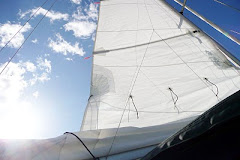

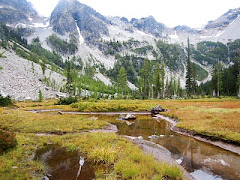


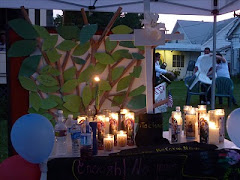






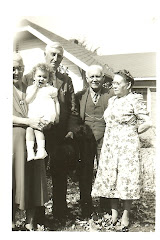
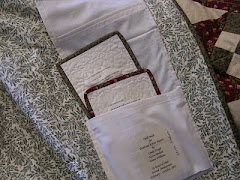








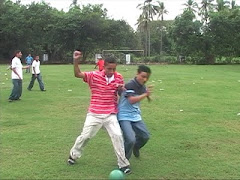
No comments:
Post a Comment